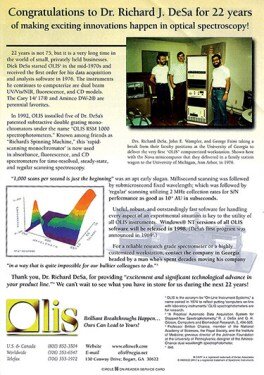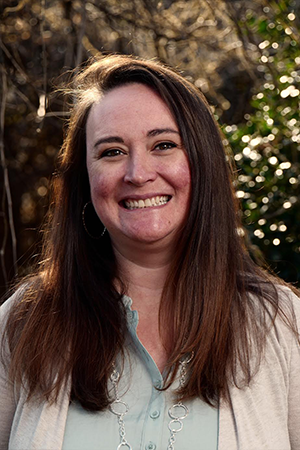Uv/vis/nir Things To Know Before You Buy
Uv/vis/nir Things To Know Before You Buy
Blog Article
A Biased View of Circular Dichroism
Table of ContentsLittle Known Facts About Circular Dichroism.Uv/vis Fundamentals ExplainedUv/vis/nir - TruthsThe smart Trick of Spectrophotometers That Nobody is Talking About3 Easy Facts About Circular Dichroism ShownThe Best Guide To Circular DichroismSpectrophotometers - TruthsThe Best Guide To Circular DichroismThe Only Guide to Uv/vis/nirCircular Dichroism Can Be Fun For AnyoneExcitement About Circularly Polarized LuminescenceThe Of Circularly Polarized LuminescenceWhat Does Uv/vis Mean?
It is then scanned through the sample and the reference services. Fractions of the occurrence wavelengths are sent through, or shown from, the sample and the reference. Electronic circuits transform the relative currents into direct transmission portions and/or absorbance/concentration worths.The transmission of a reference compound is set as a baseline (information) worth, so the transmission of all other compounds are taped relative to the initial "zeroed" substance. The spectrophotometer then transforms the transmission ratio into 'absorbency', the concentration of specific components of the test sample relative to the preliminary compound.
Since samples in these applications are not easily available in large amounts, they are specifically suited to being analyzed in this non-destructive technique. In addition, precious sample can be saved by making use of a micro-volume platform where just 1u, L of sample is required for total analyses. A quick explanation of the procedure of spectrophotometry consists of comparing the absorbency of a blank sample that does not include a colored substance to a sample which contains a colored substance.
Not known Details About Circularly Polarized Luminescence
In biochemical experiments, a chemical and/or physical home is selected and the procedure that is utilized specifies to that home in order to obtain more information about the sample, such as the quantity, pureness, enzyme activity, and so on. Spectrophotometry can be utilized for a number of techniques such as identifying optimal wavelength absorbance of samples, determining optimal p, H for absorbance of samples, figuring out concentrations of unknown samples, and identifying the p, Ka of different samples.: 21119 Spectrophotometry is likewise a handy procedure for protein filtration and can also be utilized as a method to produce optical assays of a compound.
It is possible to understand the concentrations of a 2 part mixture utilizing the absorption spectra of the basic services of each component. To do this, it is required to understand the extinction coefficient of this mixture at two wave lengths and the termination coefficients of solutions which contain the recognized weights of the two parts.

5 Easy Facts About Spectrophotometers Described
A lot of spectrophotometers are used in the UV and visible regions of the spectrum, and a few of these instruments likewise run into the near-infrared area also. The concentration of a protein can be approximated by measuring the OD at 280 nm due to the presence of tryptophan, tyrosine and phenylalanine (https://pxhere.com/en/photographer/4182440).
Nucleic acid contamination can likewise interfere. This technique requires a spectrophotometer capable of measuring in the UV area with quartz cuvettes.: 135 Ultraviolet-visible (UV-vis) spectroscopy includes energy levels that thrill electronic shifts. Absorption of UV-vis light delights particles that are in ground-states to their excited-states. Visible area 400700 nm spectrophotometry is utilized thoroughly in colorimetry science.
20. 8 O.D. Ink producers, printing companies, fabrics vendors, and many more, require the information offered through colorimetry. They take readings in the area of every 520 nanometers along the noticeable area, and produce a spectral reflectance curve or a data stream for alternative discussions. These curves can be utilized to check a new batch of colorant to inspect if it makes a match to specifications, e.
Fascination About Circular Dichroism
Traditional visible area spectrophotometers can not spot if a colorant or the base material has fluorescence. This can make it challenging to handle color problems if for instance one or more of the printing inks is fluorescent. Where a colorant contains fluorescence, a bi-spectral fluorescent spectrophotometer is used (http://www.video-bookmark.com/bookmark/6114703/olis-clarity/). There are 2 significant setups for visual spectrum spectrophotometers, d/8 (round) and 0/45.
Researchers use this instrument to determine the quantity of substances in a sample. If the substance is more focused more light will be absorbed by the sample; within small ranges, the Beer, Lambert law holds and the absorbance between samples vary with concentration linearly. When it comes to printing measurements 2 alternative settings are typically used- without/with uv filter to manage much better the effect of uv brighteners within the paper stock.
The Definitive Guide for Spectrophotometers
Some applications require little volume measurements which can be performed with micro-volume platforms. As described in the applications area, spectrophotometry can be used in both qualitative and quantitative analysis of DNA, RNA, and proteins. Qualitative analysis can be utilized and spectrophotometers are utilized to tape spectra of substances by scanning broad wavelength regions to figure out the absorbance residential or commercial properties (the intensity of the color) of the compound at each wavelength.

The Only Guide to Circularly Polarized Luminescence
One major element is the type of photosensors that are offered for different spectral regions, however infrared measurement is also challenging because practically whatever emits IR as thermal radiation, especially at wavelengths beyond about 5 m. Another complication is that many products such as glass and plastic take in infrared, making it incompatible as an optical medium.
2013. p. 13. Allen, DW; Cooksey, C; Tsai, BK (Nov 13, 2009). "Spectrophotometry". Retrieved Dec 23, 2018. Ninfa AJ, Ballou DP, Benore M (2010 ). Fundamental Laboratory Approaches for Biochemistry and Biotechnology (2nd ed.). Hoboken: Wiley & Sons. ISBN 9780470087664. OCLC 488246403. Schwedt G (1997 ). The essential guide to analytical chemistry.
Oke, J. B.; Gunn, J. E.
Get This Report on Circularly Polarized Luminescence

1021/ac50048a728. ISSN0003-2700. Ninfa AJ, Ballou DP, Benore M (2015 ). Essential Lab Techniques for Biochemistry and Biotechnology (3, rev. ed.). Hoboken, NJ: Wiley & Sons. p. 77. ISBN9780470924525. OCLC915641828. "Completely Automatic Double Beam - Atomic Absorption Spectrophotometer (AA 8000)". Lab Equipment. Labindia Analytical Instruments Pvt. Ltd. "Spectrophotometry Applications and Fundamentals".
The 2-Minute Rule for Spectrophotometers
Obtained Jul 4, 2018. Trumbo, Toni A.; Schultz, Emeric; Borland, Michael G.; Pugh, Michael Eugene (April 27, 2013). "Applied Spectrophotometry: Analysis of a Biochemical Mixture". Biochemistry and Molecular Biology Education. 41 (4 ): 24250. doi:10. 1002/bmb. 20694. PMID 23625877. (PDF). www. mt.com. Mettler-Toledo AG, Analytical. 2016. Retrieved Dec 23, 2018. Cortez, C.; Szepaniuk, A.; Gomes da Silva, L.
"Checking Out Proteins Filtration Methods Animations as Tools for the Biochemistry Teaching". Journal of Biochemistry Education. 8 (2 ): 12. doi:. Garrett RH, Grisham CM (2013 ). Biochemistry. Belmont, CA: Cengage. p. 106. ISBN 978-1133106296. OCLC 801650341. Holiday, Ensor Roslyn (May 27, 1936). "Spectrophotometry of proteins". Biochemical Journal. 30 (10 ): 17951803. doi:10. 1042/bj0301795.
PMID 16746224. Hermannsson, Ptur G.; Vannahme, Christoph; Smith, Cameron L. C.; Srensen, Kristian T.; Kristensen, Anders (2015 ). "Refractive index dispersion sensing using a range of photonic crystal resonant reflectors". Applied Physics Letters. 107 (6 ): 061101. Bibcode:2015 Ap, Ph, L. 107f1101H. doi:10. 1063/1. 4928548. S2CID 62897708. Mavrodineanu R, Schultz JI, Menis O, eds.
The smart Trick of Circular Dichroism That Nobody is Discussing
U.S. Department of Commerce National Bureau of Standards special publication; 378. Washington, D.C.: U.S. National Bureau of Standards. p. 2. OCLC 920079.
The procedure begins with a controlled source of light that brightens the examined sample. When it comes to reflection, as this light interacts with the sample, some is absorbed or emitted. The emitted light journeys to the detector, which is examined, measured, and provided as industry-standard color scales and indices.
All terms are assessed over the visible spectrum from 400 to 700 nm. In the case of transmission, when the light engages with the sample, it is either absorbed, reflected, or transmitted.
A Biased View of Circularly Polarized Luminescence
Examples include APHA (American Public Health Association) for watercolor and purity analysis, ASTM D1500 for petrochemical color analysis, edible oil indices used in food, and color analyses of beverages. The simplified math looks like this:. Where T is the transmission coefficient. All terms are examined over the noticeable spectrum from 400 to 700 nm.
Image Credit: Matej Kastelic/ Dr. Arnold J. Beckman and his associates at the National Technologies Laboratories initially created the spectrophotometer in 1940. In 1935 Beckman established the business, and the discovery of the spectrophotometer was their most ground-breaking creation.
Circular Dichroism Fundamentals Explained
99% precision. Gradually, scientists kept improving the spectrophotometer design to boost its performance. The UV capabilities of the model B spectrophotometer were improved by changing the glass prism with a quartz prism. Eventually, the Design DU was produced, including a hydrogen light and other improvements. This instrument was utilized in commercial labs, clinics, and chemistry and biochemistry departments.
Usually, a spectrophotometer is made up of 2 instruments, namely, a spectrometer and a photometer. A fundamental spectrophotometer includes a light source, a monochromator, a collimator for straight light beam transmission, a cuvette to place a sample, and a photoelectric detector.
Excitement About Uv/vis/nir
There are different kinds of spectrophotometers in various shapes and sizes, each with its own function or functionality. A spectrophotometer figures out just how much light is reflected by chemical parts. UV/Vis/NIR. It measures the distinction in light strength based upon the overall quantity of light presented to a sample and the amount of light beam that passes through the sample option
According to the instrument's design, the sample is placed in between the spectrometer and the photometer. After the light is gone through the sample, the photometer determines its strength and displays the reading. A spectrophotometer is used to figure out the concentration of both colorless and colored solutes in a service. This instrument is used to determine the rate of a reaction.
Report this page